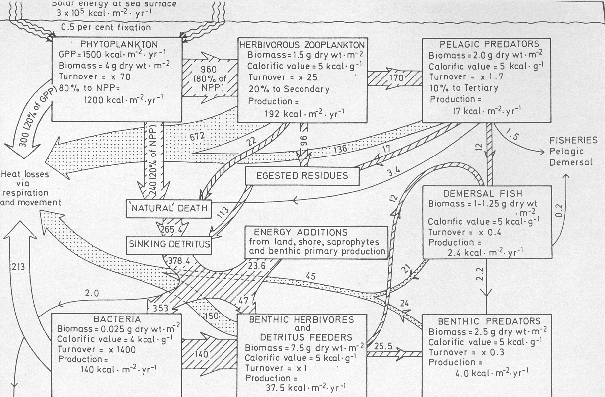Marine phytoplankton are single-celled algae that are the major photosynthesisers in the ocean, and account for up to 40% of global primary production (depending on whose figures you believe; see Falkowski 1994).
In the past 50 years, we have learned a great deal about who these organisms are, where they are found, how they grow, and how they acquire nutrients. We have a much poorer idea of their ultimate fate in nature.
Traditionally, getting eaten by other organisms (grazing) or sinking to the bottom and getting buried in ocean sediments (sedimentation) have been considered to be the major “sinks” of phytoplankton. However, it is becoming clear that:
- we cannot balance the growth and losses of phytoplankton in many ecosystems (e.g. Walsh 1983)
- ‘blooms’ of phytoplankton appear and rapidly disappear in nature without clear causes
- there is evidence of ‘mysterious’ losses of cells (cell lysis) in nature (e.g. Brussard 1995)
- in the laboratory, cultures of phytoplankton sometimes die ‘mysteriously’ (so-called “crashes”)
As an ecologist, I was always taught that to understand a population you needed to understand mortality in that population. We don’t know much about mortality in marine phytoplankton.

In the model of a marine ecosystem (taken from Steele 1974) illustrated above there is a term called “Natural Death”.
This is what this site is about!